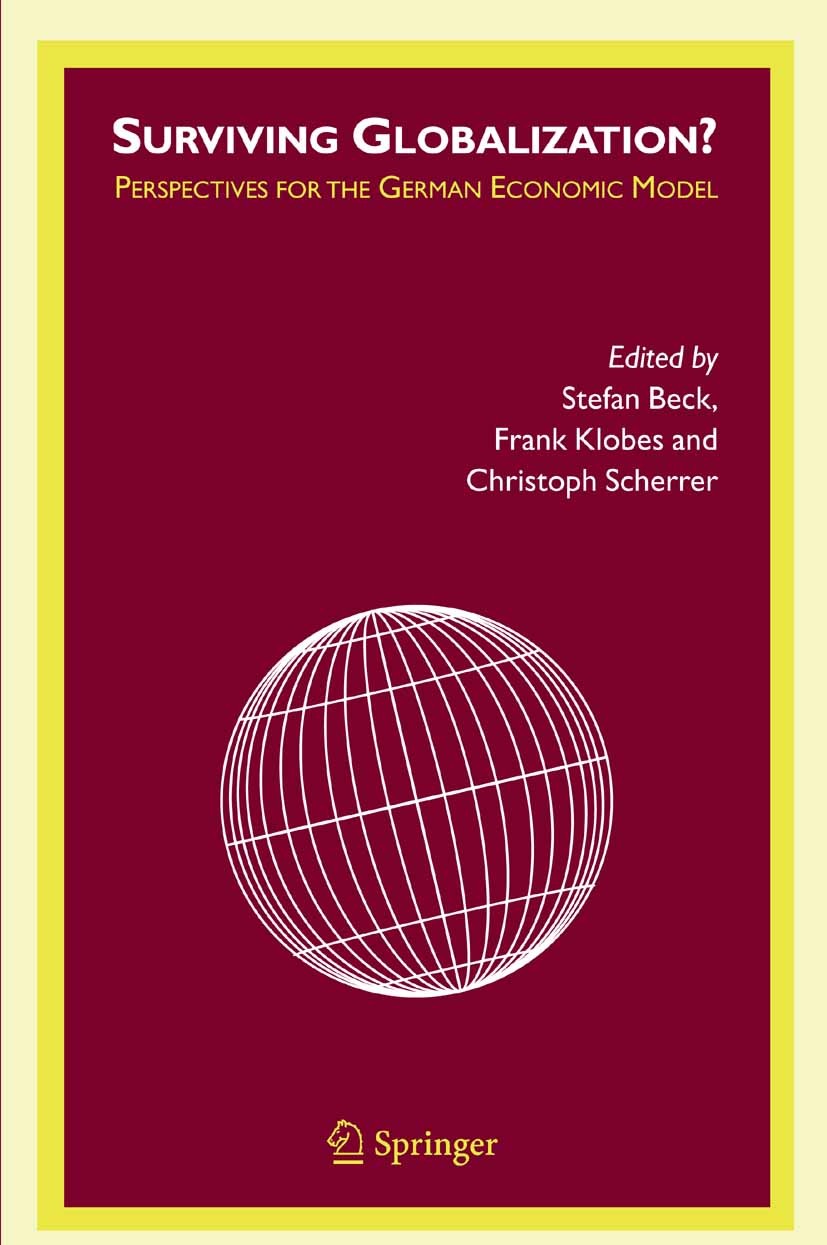| 书目名称 | Surviving Globalization? | | 副标题 | Perspectives for the | | 编辑 | Stefan Beck,Frank Klobes,Christoph Scherrer | | 视频video | http://file.papertrans.cn/883/882749/882749.mp4 | | 概述 | Provides a comprehensive and empirically profound introduction to the distinctive features of the German economic model, ranging from industrial relations to macroeconomic policies, in the light of gl | | 图书封面 |  | | 描述 | society, and state (Streeck, 1999; Simonis, 1998). Interspersed between these most commonly named elements are the following: First, the high political integrating force of the German Model after WWII was based on the adoption and transformation of corporatist political structures from National Socialist Germany. Liberal capitalism was (re)introduced under political competition between Christian Democrats and Social Democrats, who eventually found common ground in the politically mediated compromise between capital and labor: “This compromise was negotiated and institutionalized at a time when the communist wing of the workers movement and the authoritarian voices of German capital – for various reasons – were excluded from political participation” (Streeck, 1999, p. 15; translation: SB). The partnership between firms and unions manifested itself in manifold institutional structures. Apart from the social partners’ autonomy in matters of wage policy, worker codetermination at plant level and in operations is regarded as one of the special achievements of the German Model and has contributed substantially to social peace. The political coordination forms of concerted action, round t | | 出版日期 | Book 2005 | | 关键词 | Institution; Nation; change; globalization; institutional; integration; parapluprod; policy; state; welfare | | 版次 | 1 | | doi | https://doi.org/10.1007/1-4020-3064-9 | | isbn_softcover | 978-1-4419-5262-2 | | isbn_ebook | 978-1-4020-3064-2 | | copyright | Springer-Verlag US 2005 |
The information of publication is updating

|
|
 |Archiver|手机版|小黑屋|
派博传思国际
( 京公网安备110108008328)
GMT+8, 2025-12-17 08:51
|Archiver|手机版|小黑屋|
派博传思国际
( 京公网安备110108008328)
GMT+8, 2025-12-17 08:51


